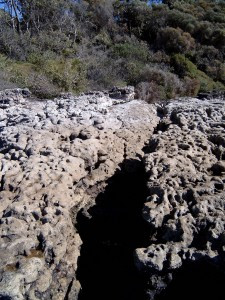“Rock of Ages, Cleft for Me” stands as a cornerstone in Christian hymnody, resonating deeply with believers for generations. Penned by Augustus M. Toplady, and often paired with the stirring melody “Toplady” by Thomas Hastings, this hymn beautifully encapsulates the biblical call to let the word of Christ dwell richly within us, fostering teaching, admonition, and heartfelt gratitude through song, as highlighted in Colossians 3:16.
Let’s delve into the rich tapestry of “Rock of Ages,” exploring its lyrical depth, theological significance, and enduring appeal for songwriters, worship leaders, and anyone seeking a deeper understanding of faith.
The Enduring Appeal of “Rock of Ages”
“Rock of Ages” is structured in a 77.77.77 meter, a hymn form characterized by lines with seven syllables each. As explored in discussions on hymn meter, this structure typically employs a trochaic rhythm, placing emphasis on odd syllables, creating a sense of urgency and emotional intensity. This rhythmic choice is particularly apt for conveying profound emotions like repentance, plea, and unwavering faith, mirroring the cry for help inherent in the hymn’s message.
Toplady masterfully leverages this meter to underscore the hymn’s plaintive yet resolute tone. The central theme revolves around seeking refuge in Christ, a desperate yet hopeful plea embodied in the line, “Jesus, let me hide in you.” Examining each verse reveals a powerful progression of thought:
- A plea for salvation and cleansing.
- Recognition of personal inadequacy and inability to self-redeem.
- Acknowledgement of utter helplessness and offering nothing of personal merit.
- A stark portrayal of the dire consequences without divine intervention and acceptance of inherent guilt.
This thoughtful progression is a hallmark of strong songwriting. Unlike weaker compositions where subsequent verses merely reiterate the initial verse, “Rock of Ages” builds upon itself, deepening the emotional and theological landscape with each stanza.
The commonly used melody by Thomas Hastings harmonizes seamlessly with Toplady’s lyrics, enhancing the hymn’s emotional resonance. Furthermore, contemporary arrangements, such as those by artists like Brooks Ritter, often enrich the hymn’s musicality, forging an even stronger connection between melody and poetic expression.
A Verse-by-Verse Exploration of “Rock of Ages”
To truly appreciate the hymn’s depth, a closer look at each verse is essential.
Verse 1: Refuge and Redemption
Rock of Ages, cleft for me,
Let me hide myself in Thee:
Let the water and the blood,
From thy wounded side which flowed,
Be of sin the double cure;
Save from wrath and make me pure.
The hymn opens with the iconic metaphor, “Rock of Ages.” The image of God as a rock is deeply rooted in biblical tradition, appearing over twenty times in the Psalms alone. Toplady’s inspiration, however, is likely drawn from the story of Moses in Exodus 33:22. Moses, seeking to witness God’s glory, is told:
and while my glory passes by I will put you in a cleft of the rock, and I will cover you with my hand until I have passed by. — Exodus: 33:22 ESV
 Rock cleft at Hyam
Rock cleft at Hyam
This powerful imagery of finding refuge in a rock cleft resonates throughout the verse. Toplady identifies with Moses’s vulnerability before divine glory, recognizing the universal human condition of standing before judgment (2 Corinthians 5:10) stripped bare and helpless. The “cleft of the rock” becomes a metaphor for Christ Himself. The lines “Let the water and the blood, / From thy wounded side which flowed” explicitly identify the Rock as Christ, referencing the crucifixion. The hymn asserts a profound theological truth: salvation and righteousness are credited through Christ’s sacrifice. “Hide me in the cleft of the rock!” is not just a plea for shelter, but a declaration of faith in Christ as the ultimate refuge.
The metaphor of the rock as shelter may have also been inspired by a personal experience. It’s said that Toplady sought refuge in a cave during a storm, and this experience contributed to the hymn’s powerful imagery of God as a refuge from life’s storms. This blend of biblical understanding and personal experience is a common thread in worship songwriting even today.
The verse concludes by articulating the “double cure” – salvation from wrath and purification from sin. Interestingly, the original ending penned by Toplady in 1763 read:
Be of sin the double cure,
Cleanse me from its guilt and pow’r.
At the time, “cure” and “power” rhymed according to the 18th-century pronunciation. However, in 1815, Thomas Cotterill revised the final line to “Save from wrath and make me pure,” enhancing both the rhyme and deepening the theological meaning. This revision highlights the dual aspect of Christ’s saving work: justification (saving from wrath) and sanctification (making pure).
Verse 2: Beyond Human Effort
Not the labors of my hands
Can fulfill thy law’s commands;
Could my zeal no respit know,
Could my tears forever flow,
All for sin could not atone;
Thou must save, and thou alone.
Verse two shifts focus to the inadequacy of human effort in achieving salvation. It’s a clear rejection of works-based theology. The lines “Could my zeal no respit know, / Could my tears forever flow” may allude to and critique the emotional fervor characteristic of Wesleyan revivals, a movement Toplady was known to oppose. Regardless of the specific context, these lines powerfully convey the futility of relying on emotional displays or human actions to earn divine favor. True salvation, the hymn asserts, is not attained through human endeavor, no matter how fervent or sustained.
This verse emphasizes human insufficiency and absolute dependence on God’s grace for salvation. It sets the stage for the subsequent verse, which delves deeper into human helplessness.
Verse 3: Acknowledging Helplessness
Nothing in my hand I bring,
Simply to the cross I cling;
Naked, come to thee for dress;
Helpless, look to thee for grace;
Foul, I to the fountain fly;
Wash me, Savior, or I die.
This verse marks a crucial turning point, portraying a state of utter dependence and surrender. “Nothing in my hand I bring” encapsulates the concept of sola gratia – salvation by grace alone. The image of clinging to the cross signifies complete reliance on Christ’s sacrifice.
The powerful triad of “Naked, Helpless, Foul” evokes the scene of humanity after the Fall in the Garden of Eden. These stark words paint a picture of spiritual destitution:
- Naked: In need of covering, highlighting spiritual shame and inadequacy. Fig leaves of self-righteousness are insufficient.
- Helpless: Recognizing the inability to remedy our fallen state. Earthly comforts and solutions are futile.
- Foul: Stained by sin at our core, acknowledging inherent moral corruption.
In contrast to Adam and Eve’s futile attempt to hide from God, the hymn’s singer comes forth, acknowledging the futility of hiding and instead clinging to the cross. The desperate plea, “Wash me, Savior, or I die,” underscores the urgency and absolute necessity of divine cleansing and redemption.
The verse is punctuated by strong, concise verbs – “bring, cling, come, look, fly, wash, die” – creating a sense of immediacy and resolute action in the face of spiritual crisis.
Verse 4: Eternity and Judgment
While I draw this fleeting breath,
When mine eyes shall close in death,
When I soar to worlds unknown,
See thee on thy judgment throne,
Rock of Ages, cleft for me,
Let me hide myself in thee.
The final verse broadens the perspective to encompass the entirety of life and eternity. It speaks to the fleeting nature of earthly existence (“While I draw this fleeting breath”) and anticipates death, the afterlife (“When mine eyes shall close in death,” “When I soar to worlds unknown”), and ultimately, judgment (“See thee on thy judgment throne”). Even in the face of eternal judgment, the hymn returns to the foundational plea: “Rock of Ages, cleft for me, / Let me hide myself in thee.”
Some hymnals alter the line “See thee on thy judgment throne” to “And behold Thee on Thy throne.” However, the original wording is theologically more potent. “See thee on thy judgment throne” emphasizes the reality of judgment and the singer’s helpless state before divine justice. The alteration weakens this crucial point, diluting the hymn’s powerful message of refuge in the face of judgment.
Toplady masterfully employs succinct and impactful verbs throughout this final verse – “draw, close, soar, see, cleft, hide.” The lines are also rich with internal rhyme, such as “mine/eyes,” “soar/worlds,” “See/thee,” “hide/myself,” enhancing memorability and musicality.
Conclusion: A Hymn that Sings You Home
“Rock of Ages” is more than just a hymn; it’s a profound theological statement, a poignant expression of human vulnerability, and a powerful declaration of faith in Christ as the ultimate refuge. Its memorability, evocative imagery, and theological astuteness have rightfully secured its place among the most beloved and enduring hymns in Christian tradition. “Rock of Ages” is indeed a song that can sing you home, offering solace, hope, and a timeless message of salvation to all who sing its words.
Tagged as: Rock Of Ages Song, Rock of Ages hymn, Augustus Toplady, hymn analysis, Christian hymn, cleft of the rock, salvation, grace, redemption, hymn meter, Toplady hymn tune

